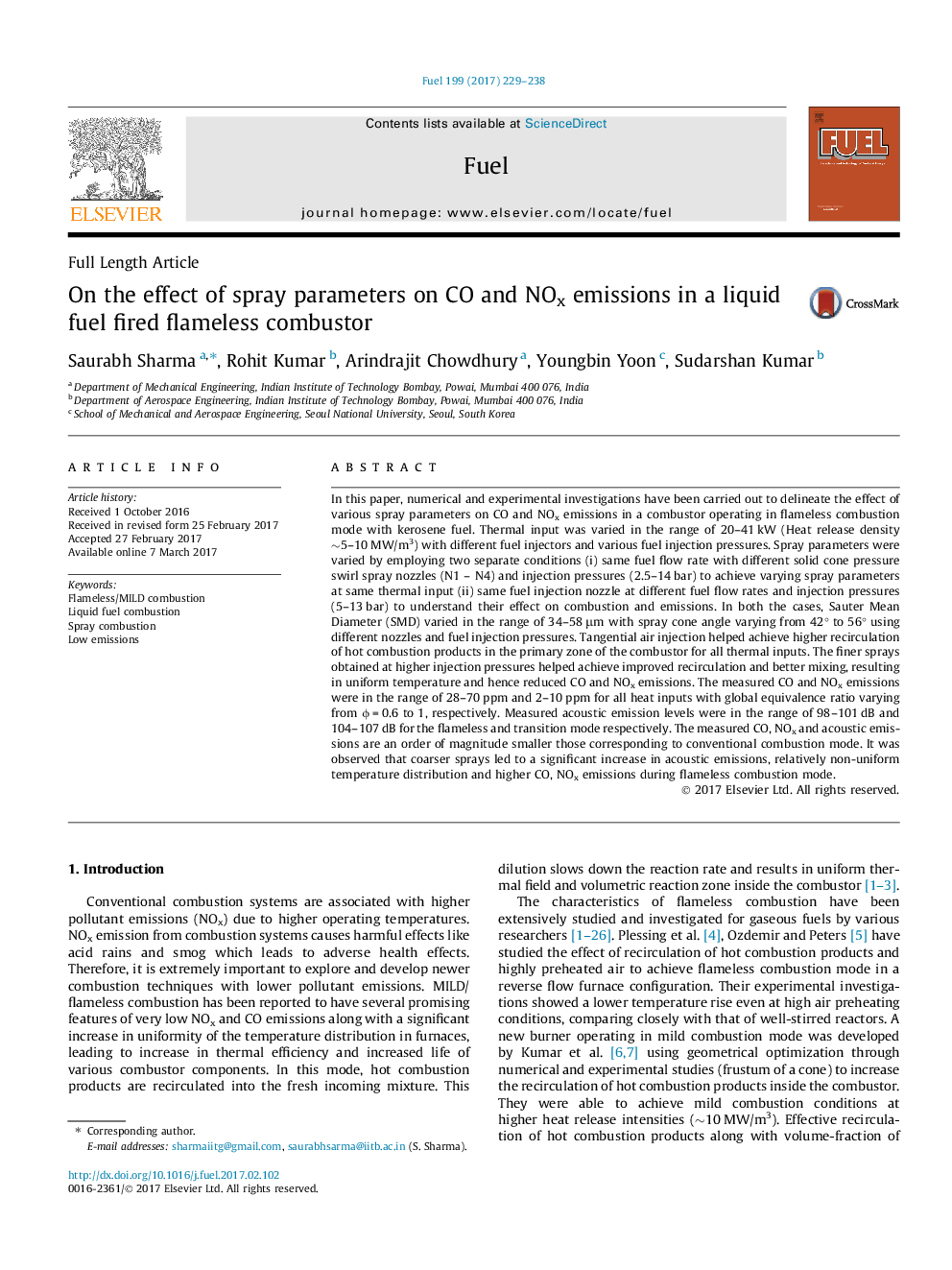| Article ID | Journal | Published Year | Pages | File Type |
|---|---|---|---|---|
| 6474746 | Fuel | 2017 | 10 Pages |
In this paper, numerical and experimental investigations have been carried out to delineate the effect of various spray parameters on CO and NOx emissions in a combustor operating in flameless combustion mode with kerosene fuel. Thermal input was varied in the range of 20-41 kW (Heat release density â¼5-10 MW/m3) with different fuel injectors and various fuel injection pressures. Spray parameters were varied by employing two separate conditions (i) same fuel flow rate with different solid cone pressure swirl spray nozzles (N1 - N4) and injection pressures (2.5-14 bar) to achieve varying spray parameters at same thermal input (ii) same fuel injection nozzle at different fuel flow rates and injection pressures (5-13 bar) to understand their effect on combustion and emissions. In both the cases, Sauter Mean Diameter (SMD) varied in the range of 34-58 μm with spray cone angle varying from 42° to 56° using different nozzles and fuel injection pressures. Tangential air injection helped achieve higher recirculation of hot combustion products in the primary zone of the combustor for all thermal inputs. The finer sprays obtained at higher injection pressures helped achieve improved recirculation and better mixing, resulting in uniform temperature and hence reduced CO and NOx emissions. The measured CO and NOx emissions were in the range of 28-70 ppm and 2-10 ppm for all heat inputs with global equivalence ratio varying from Ï = 0.6 to 1, respectively. Measured acoustic emission levels were in the range of 98-101 dB and 104-107 dB for the flameless and transition mode respectively. The measured CO, NOx and acoustic emissions are an order of magnitude smaller those corresponding to conventional combustion mode. It was observed that coarser sprays led to a significant increase in acoustic emissions, relatively non-uniform temperature distribution and higher CO, NOx emissions during flameless combustion mode.
